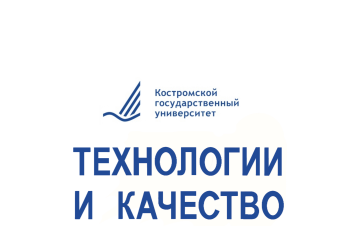- 2
- NEW APPROACHES TO THERMAL CALCULATIONS OF VENTILATED CLOTHING
- Rodicheva M. V., Abramov A. V., Utkin N. N., Malyarova P. M. New approaches to thermal calculations of ventilated clothing. Technologies & Quality. 2022. Nr 2(56). P. 11–15. (In Russ.) https: doi 10.34216/2587-6147-2022-2-56-11-15.
- DOI: 10.34216/2587-6147-2022-2-56-11-15
- УДК: 687.1:536.2]:519.876.5
- Publish date: 2022-05-19
- Annotation: It is shown that the existing mathematical models of heat transfer do not fully take into account the real shape and dimensions of the air layers of ventilated clothing. A numerical modelling method is proposed that takes into account the influence of the morphology of the human body and the physical and mechanical properties of textile materials on the size and shape of the air gap. Peculiarities of convective processes in the air interlayers of ventilated clothing at the ambient temperature of +27 °C are revealed by the calcula-tions. The zones of intensification and deceleration of the air flow under the clothes were revealed. It is shown that the results of calculations are consistent with the results of experimental studies.
- Keywords: ventilated clothing, air-laid material packs, heat and mass transfer, numerical simulation, projecting, geometric model, virtual mannequin
- Literature list: 1. Kang Z., Shou D., Fan J. Numerical modeling of body heat dissipation through static and dynamic cloth-ing air gaps. International Journal of Heat and Mass Transfer. 2020;157:119–133. 2. Deng M., Wang Yu, Li P. Effect of air gaps characteristics on thermal protective performance of firefight-ers’ clothing: A review. International Journal of Clothing Science and Technology. 2018;30(2):246–267. 3. GOST R ISO 11079–2015. Opredelenie holodovogo stressa i ego interpretaciya na osnove pokazatelej trebuemoj termoizolyacii odezhdy i lokal'nogo ohlazhdayushchego vozdejstviya [State Standart R ISO 11079–2015. Definition of cold stress and its interpretation based on the indicators of the required ther-mal insulation of clothing and local cooling effect]. Moscow, Standartinform Publ., 2016. 39 p. 4. Rodicheva M. V., Abramov A. V., Surzhenko E. Ya., Chernenko D. A. Investigation of the influence of non-uniformity air layers in clothing on the heat exchange of a person with the environment. Izvestiya vysshih uchebnyh zavedenij. Tekhnologiya legkoj promyshlennosti [Proceedings of higher educational in-stitutions. Light industry technology]. 2021;1(51):24–30. (In Russ.)



